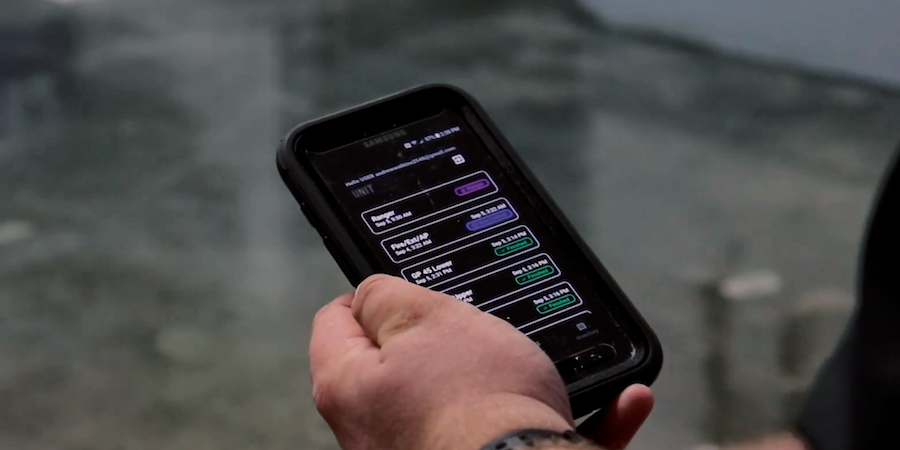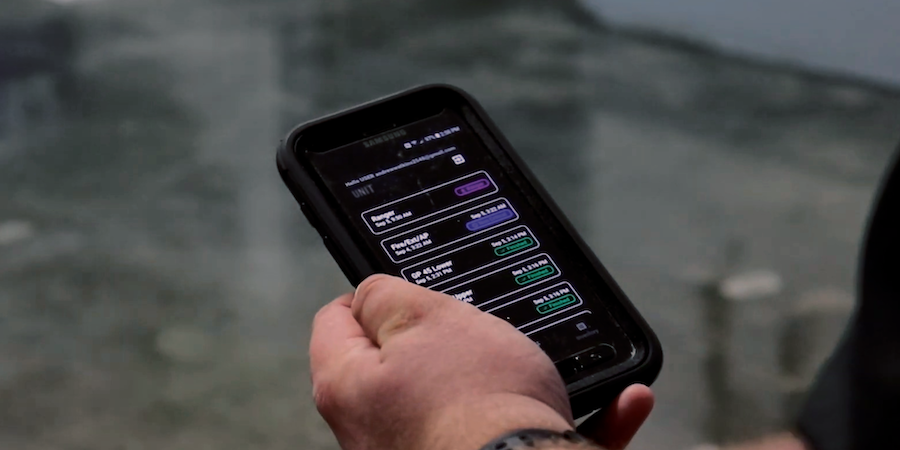A corrections officer’s job is rarely done from an office desk chair; their office is out on patrol, whether it is on the road, in the field, or through the halls, and an officer needs technology agile enough to keep up.
The equipment corrections officers use in their day-to-day operations gives them access to the real-time data needed in the field, enhances situational awareness, and connects officers to each other and other agencies. The common feature threading through much of this technology is mobility. To keep pace with trends in corrections, grant funders now recognize that smartphones, tablets and even smartwatches can be essential parts of any modernization project.
Most corrections grant funders look at mobility initiatives as part of a larger strategy to solve a particular problem — such as improving the safety of inmates and staff, decreasing response time to incidents, and tracking inmates so incidents are less likely to occur in the first place. It is left up to the applicant to determine how they will use technology to more effectively meet their goals. In these instances, mobile devices and apps become essential project enablers that empower agencies to pursue broader project objectives across their entire organization.
Framing your grant application
So how can your agency connect technology acquisition to a grant funder’s mission? The key questions you must ask are: “Why do we need this particular mobility solution?” and “How will this technology advance the objectives of the grant program?”
Watch the Grants Office webinar
Learn how federal and state funding enables corrections agencies to boost operational effectiveness with mobile. Watch Webinar
Framing your request in this way will show the funder that your team has a legitimate need for the equipment — while also ensuring your agency is prepared to accomplish the specific goals and objectives of the project.
3 illustrative grant projects
Below are three examples of how these grant proposals may be worded. Note how each approach leverages mobility solutions while also taking special care to outline the broader mission of the project:
- Our project will deploy unique and inventive technology solutions to address incidents of sexual abuse and sexual assault within our facility. According to the Bureau of Justice Statistics, an estimated 4.0 percent of state and federal prison inmates and 3.2 percent of jail inmates report experiencing one or more incidents of sexual victimization by another inmate or facility staff. The proposed smartphone solution will improve response time and increase investigative analytical capacity. This unit will have access to cameras and audio-recording equipment to surveil the facility and gather video evidence. Officers will also be able to immediately update databases to enable better tracking of incidents and perpetrators. In total, the proposed smartphones are anticipated to serve as a vital instrument in our agency’s goal of stemming the flow of sexual violence cases within 36 months of full implementation.
- Our project will outfit probation/parole officers with tools that enhance operational efficiencies, foster seamless efficiency, and improve officer safety. The proposed mobile solution will integrate data from situational awareness, field reporting and asset management applications into one device that can be used in the field, the office and remote work locations. The use of this single mobile device during field activities will significantly increase operational efficiencies and substantially improve officer safety. Officers will have the ability to seamlessly transition from working in the field and home with the same device utilizing Samsung DeX. With the deployments, the agency will be empowered to make better decisions based on real time field data.
- Our project will enhance officers’ ability to protect the facility’s population and staff. The proposed smartphones and smartwatches will enhance our agency’s capabilities to prevent, protect, and respond to incidents within our facility. The communication and camera functionality of the smartphones will provide more holistic coverage for officers working during high-traffic periods (during prisoner transfers, for example). Further, smartwatches will provide real-time, mission-critical information in the event of an emergency when seconds matter most. If successful in these initiatives, the agency plans to expand equipment deployment to all staff members working in the facility.
The preparation your agency puts into developing your next project will yield significant results in obtaining grant funds. By the same token, the process of proposal development — or the actual task of writing the grant application — will be more productive if you’ve thought through the specific outcomes of your project before ever putting pen to paper.
Engaging with the Samsung Grant Support Program
Finding the best way to align your technology needs with the right grant program can be challenging — even for the most seasoned grant-seeking agency.
If you’d prefer individual coaching on how to integrate mobility into an upcoming grant proposal, reach out to your Samsung representative. They can put you in touch with our team of experienced Grants Development Consultants from Grants Office. This assistance — provided totally free by Samsung — will guide your agency through the entire grant-seeking process, including a comprehensive inventory of grant opportunities that fit with your project, as well as one-on-one consultation that will help your agency navigate the landscape of technology-friendly public safety grant funding.
Contact your Samsung Representative to get started today. And don’t forget to tune into the full Corrections Technology Solutions 2021 Grant Funding webinar.









